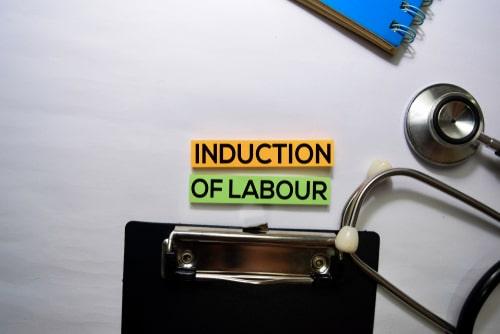Chicago, IL 60601
FREE CONSULTATIONS 312-462-4200
TOLL FREE 833-462-4200
When Can Labor Induction Increase the Risks of Birth Injuries?
 Childbirth is a natural process that usually progresses on its own. However, there are instances when medical intervention becomes necessary to ensure the safety of both the mother and the baby. One common intervention is labor induction, which involves the use of medications or other methods to stimulate contractions and initiate labor. Labor induction can be a lifesaving procedure in certain situations, or it may be used to speed delivery and avoid complications that may occur during extended labor. However, it is important to understand that labor induction also carries some risks, including an increased likelihood of certain types of birth injuries.
Childbirth is a natural process that usually progresses on its own. However, there are instances when medical intervention becomes necessary to ensure the safety of both the mother and the baby. One common intervention is labor induction, which involves the use of medications or other methods to stimulate contractions and initiate labor. Labor induction can be a lifesaving procedure in certain situations, or it may be used to speed delivery and avoid complications that may occur during extended labor. However, it is important to understand that labor induction also carries some risks, including an increased likelihood of certain types of birth injuries.
What Is Labor Induction?
In some cases, doctors or other medical professionals may take steps to artificially initiate labor before it begins spontaneously. This type of intervention is typically recommended when there are concerns about the health of the mother or the baby or when the pregnancy has gone past the due date. The most common method of labor induction involves the administration of synthetic hormones, such as Pitocin, to stimulate uterine contractions. Other methods, such as breaking the amniotic sac or using prostaglandin medications to “ripen” the cervix, may also be used.
When Is Labor Induction Necessary?
Doctors may determine that labor should be induced in a variety of situations, including:
-
Post-term pregnancy
If pregnancy continues beyond 42 weeks, the risk of complications for both the mother and the baby increases. Labor induction may be recommended to prevent these complications.
-
Medical condition
Certain health issues experienced by a mother, such as gestational diabetes or preeclampsia, may necessitate labor induction to protect the health of the mother and the baby.
-
Fetal distress
If there are indications that the baby is experiencing an abnormal heart rate or other issues that could lead to health concerns, labor induction may be necessary to expedite delivery and prevent further complications.
-
Placental problems
If there are issues affecting the placenta, such as placental abruption or placenta previa, labor induction may be required to ensure the baby receives adequate oxygen and nutrients.
-
Infections
Chorioamnionitis, which is an infection that may affect the amniotic fluid, the placenta, or the membranes in the uterus, may put the health of the child at risk, and it may be necessary to induce labor and deliver the child to prevent injuries.
The Risks of Labor Induction
While labor induction can be a safe and effective procedure, it is not without risks. One of the main concerns involves the potential birth injuries that may occur when labor is induced. Some of the potential risks associated with labor induction include:
-
Uterine hyperstimulation
The medications used to induce labor can cause the uterus to contract too frequently or too strongly, leading to decreased blood flow to the baby and an increased risk of fetal distress.
-
Umbilical cord problems
Rapid or forceful contractions during labor induction can put pressure on the umbilical cord, potentially causing it to become compressed or twisted. This can restrict the baby's oxygen supply, which could potentially lead to problems such as hypoxic-ischemic encephalopathy or cystic encephalomalacia.
-
Failed induction
In some cases, labor induction may not be successful, resulting in prolonged labor or the need for a Cesarean section. Prolonged labor increases the risk of birth injuries, such as shoulder dystocia or oxygen deprivation.
-
Infections
When the amniotic sac is artificially ruptured or medical instruments are used during labor induction, there is a risk that both the mother and the baby may contract infectious diseases.
Reducing the Risks of Induced Labor
While the risks associated with labor induction cannot be completely eliminated, some steps can be taken to minimize them. It is crucial for healthcare providers to carefully assess the need for labor induction and weigh the benefits against the potential injuries or health issues that could affect both the mother and the child. Adequate monitoring of the vital signs of the mother and baby during labor is essential to detect any signs of distress or other complications.
Additionally, open communication between the healthcare team and the expectant parents is vital. Parents should be informed about the reasons for labor induction, the potential risks involved, and any alternative options that may be available. This will allow them to make informed decisions and actively participate in their own care.
Contact an Experienced Illinois Labor Induction Injury Lawyer
If you believe a birth injury was caused by negligence during labor induction, you must determine how to proceed. The dedicated Chicago birth injury attorneys at Birth Injury Law Alliance, Ltd. have worked with many families in Illinois who have been affected by birth injuries. We understand the complexities of these cases and are committed to helping our clients understand the steps they can take to address injuries affecting children and mothers and ensure that they can receive the proper care. To schedule a free consultation, please call 312-462-4200. We are here to listen to your story, answer your questions, and provide the support and advocacy you need during this challenging time.





